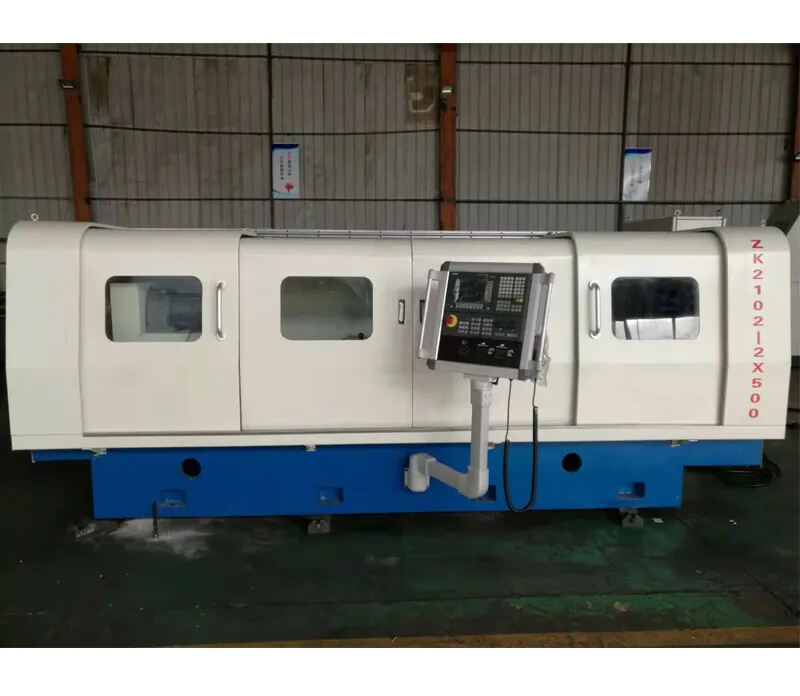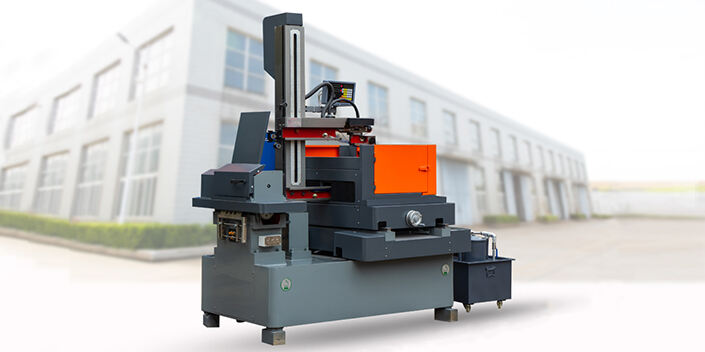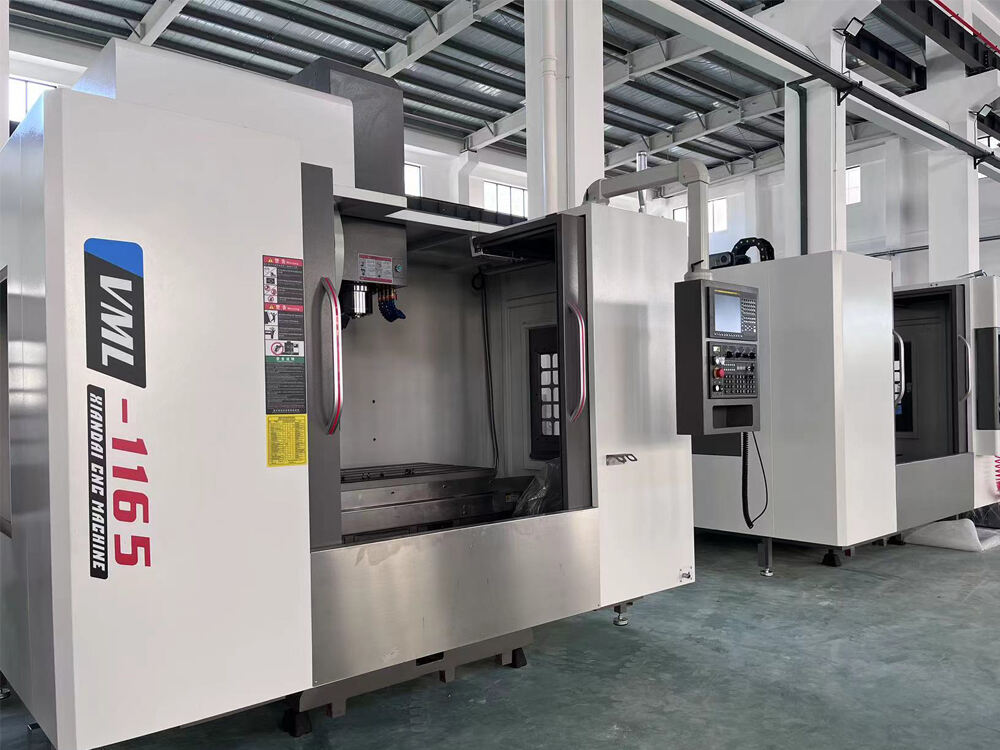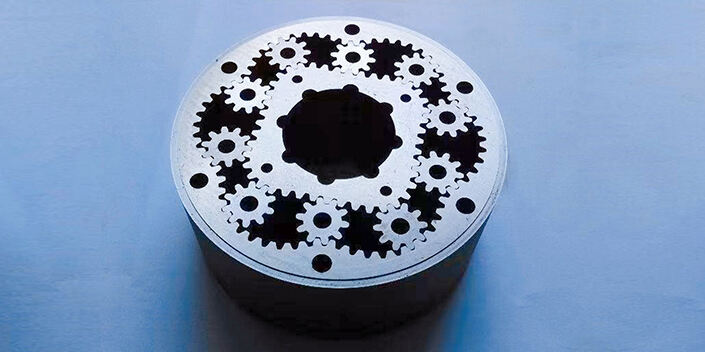Vai trò của Máy Xử lý Lỗ Sâu trong Kỹ thuật Hàng không
Xử lý lỗ sâu, đặc biệt trong ngành hàng không vũ trụ, đóng vai trò quan trọng trong việc sản xuất các thành phần quan trọng đòi hỏi độ chính xác và chất lượng. Hiểu biết về lĩnh vực chuyên biệt này có thể cung cấp cái nhìn sâu sắc về những thách thức và đổi mới mà các nhà sản xuất hiện nay phải đối mặt. Trong bài viết blog này, chúng tôi sẽ đi sâu vào những phức tạp của máy xử lý lỗ sâu trong kỹ thuật hàng không vũ trụ.
## Hiểu về Quy trình Khoan Lỗ Sâu trong Kỹ thuật Hàng không
## Định nghĩa và Tầm quan trọng của Quy trình Khoan Lỗ Sâu
## Khoan lỗ sâu đề cập đến việc tạo ra các lỗ có độ sâu lớn hơn đáng kể so với đường kính của chúng. Theo một số tiêu chuẩn gia công, các lỗ được phân loại là sâu nếu độ sâu của chúng lớn hơn mười lần đường kính. Kỹ thuật chuyên biệt này rất quan trọng trong lĩnh vực hàng không, chủ yếu cho các bộ phận như cánh tuabin, vòi phun nhiên liệu và các thành phần của hệ thống hạ cánh, vì những ứng dụng này đòi hỏi độ chính xác kích thước và độ tin cậy tuyệt vời.
## Ứng dụng chính trong Kỹ thuật Hàng không
## Trong ngành hàng không, khoan lỗ sâu được ứng dụng trong nhiều thành phần quan trọng:
- ## Cánh tuabin ## : Các lỗ làm mát được khoan vào cánh tuabin cho phép điều chỉnh nhiệt độ hiệu quả, ảnh hưởng trực tiếp đến hiệu suất và hiệu quả của động cơ.
- ## Cấu trúc máy bay ## : Các lỗ sâu trong khung máy bay cải thiện tính khí động học bằng cách giảm trọng lượng trong khi vẫn duy trì tính toàn vẹn cấu trúc.
- ## Hệ thống nhiên liệu Khoan lỗ sâu là rất quan trọng trong việc tạo ra các bộ phun nhiên liệu chính xác tối ưu hóa việc cung cấp nhiên liệu và hiệu suất đốt cháy.
Rõ ràng là quy trình khoan lỗ sâu là phần không thể thiếu trong kỹ thuật hàng không vũ trụ, ảnh hưởng trực tiếp đến hiệu suất và an toàn.
Các loại kỹ thuật khoan lỗ sâu
Nhiều kỹ thuật được sử dụng cho khoan lỗ sâu:
- Khoan Gundrilling : Một phương pháp phổ biến được biết đến với độ chính xác và khả năng tạo ra các lỗ dài, thẳng. Nó sử dụng các công cụ carbide để có hiệu suất tốt hơn và độ lệch đường tâm tối thiểu.
- Khoan BTA : Được biết đến với tên gọi khoan Hiệp hội Boring và Trepanning, nó lý tưởng cho việc gia công khối lượng lớn các lỗ sâu liên tục.
- Khoan hút : Kỹ thuật sáng tạo này liên quan đến việc khoan và loại bỏ phoi đồng thời, đảm bảo độ chính xác được cải thiện.
Những phương pháp này không chỉ nâng cao năng suất mà còn đảm bảo chất lượng, điều này là rất quan trọng trong lĩnh vực hàng không vũ trụ.
Cách mà máy móc xử lý lỗ sâu hoạt động
Các thành phần chính của máy xử lý lỗ sâu
Máy gia công lỗ sâu được cấu thành từ một số bộ phận thiết yếu:
- Công cụ cắt và trục chính : Được thiết kế cho hiệu suất cao, các thành phần này có thể chịu được áp lực cơ học của khoan lỗ sâu.
- Hệ thống chất làm mát : Chất lỏng làm mát áp suất cao giúp quản lý nhiệt độ trong quá trình khoan, từ đó nâng cao hiệu suất công cụ và giảm mài mòn.
- Cơ chế cấp liệu : Các cơ chế cấp liệu được điều khiển chính xác đảm bảo rằng vật liệu tiến về phía công cụ trong quá trình khoan với tốc độ ổn định.
Quy trình vận hành từng bước
- Xoay công cụ : Trục chính xoay công cụ cắt.
- Cấp liệu có kiểm soát : Phôi được cấp về phía công cụ cắt.
- Loại bỏ phoi : Chất lỏng làm mát áp suất cao loại bỏ các phoi được tạo ra và duy trì tính toàn vẹn của công cụ.
- Giám sát hệ thống : Các cảm biến tiên tiến giám sát độ mài mòn của công cụ, nhiệt độ và độ rung, đảm bảo điều kiện khoan tối ưu.
Đổi mới công nghệ nâng cao hiệu suất
Các tiến bộ gần đây trong máy gia công lỗ sâu tận dụng công nghệ để nâng cao hiệu quả sản xuất:
- Hệ thống thay đổi công cụ tự động : Những hệ thống này giảm thiểu thời gian ngừng hoạt động và cải thiện hiệu quả hoạt động.
- Tích hợp Machine Learning và AI : Công nghệ này cho phép bảo trì dự đoán, giảm thiểu sự cố máy móc bất ngờ.
- Cung cấp chất lỏng làm mát nâng cao : Những đổi mới trong hệ thống chất lỏng làm mát đảm bảo việc loại bỏ chip tốt hơn và giảm thiểu sự tích tụ nhiệt.
Lợi ích của gia công lỗ sâu trong ngành hàng không
Sự chính xác và độ chính xác trong sản xuất
Máy gia công lỗ sâu có thể đạt được độ chính xác hẹp và hình học phức tạp rất quan trọng cho các ứng dụng hàng không. Độ chính xác này giảm thiểu việc làm lại tốn kém và lãng phí, nâng cao hiệu quả sản xuất tổng thể.
Hiệu quả trong chu kỳ sản xuất
Với khả năng hoạt động liên tục và hệ thống tự động, gia công lỗ sâu giảm đáng kể chu kỳ sản xuất. Hiệu quả này là một khía cạnh quan trọng trong ngành hàng không nhanh chóng.
Độ linh hoạt và khả năng thích ứng của vật liệu
Máy xử lý lỗ sâu có thể làm việc với nhiều loại vật liệu, từ hợp kim có độ bền cao đến vật liệu composite nhẹ, khiến chúng có thể thích ứng với nhiều yêu cầu kỹ thuật hàng không.
Những thách thức trong xử lý lỗ sâu cho kỹ thuật hàng không
Giới hạn vật liệu và sự mài mòn của dụng cụ
Một trong những thách thức chính là sự mài mòn của các dụng cụ cắt khi làm việc với các vật liệu cứng thường được sử dụng trong các ứng dụng hàng không. Việc theo dõi liên tục tình trạng dụng cụ và lựa chọn vật liệu phải được duy trì một cách tỉ mỉ.
Giới hạn công nghệ và giải pháp
Sự phức tạp của các thành phần hàng không tiên tiến thường đòi hỏi các giải pháp gia công tùy chỉnh. Việc vượt qua những giới hạn này liên quan đến nghiên cứu và đổi mới liên tục trong công nghệ và kỹ thuật gia công.
Các yếu tố kinh tế trong sản xuất
Chi phí cao liên quan đến máy xử lý lỗ sâu có thể làm nản lòng một số nhà sản xuất. Cân bằng giữa chất lượng và hiệu quả chi phí là rất quan trọng, đặc biệt đối với các công ty nhỏ.
Xu hướng và đổi mới trong gia công lỗ sâu
Công nghệ mới nổi và tác động của chúng
Sự tiến bộ không ngừng trong công nghệ báo hiệu những khả năng mới cho gia công lỗ sâu, bao gồm độ chính xác, tốc độ và tính linh hoạt được cải thiện. Điều này bao gồm việc tích hợp sản xuất bổ sung và các hệ thống điều khiển tiên tiến.
Tính bền vững trong gia công lỗ sâu
Khi các ngành công nghiệp chuyển sang các phương pháp thân thiện với môi trường, lĩnh vực hàng không vũ trụ đang áp dụng các quy trình gia công bền vững với sản xuất chất thải thấp hơn và tiêu thụ năng lượng giảm.
Công nghiệp 4.0 và sản xuất thông minh
Việc tích hợp công nghệ Internet of Things (IoT) trong các máy gia công lỗ sâu cho phép các hoạt động thông minh hơn, dựa trên dữ liệu, cải thiện giám sát và kéo dài tuổi thọ máy.
Kết luận
Máy gia công lỗ sâu là không thể thiếu trong kỹ thuật hàng không vũ trụ, ảnh hưởng đáng kể đến sự phát triển của các máy bay và linh kiện an toàn, hiệu quả và đổi mới. Khi công nghệ sản xuất phát triển, khả năng của các máy gia công lỗ sâu cũng sẽ phát triển, đảm bảo chúng luôn đứng ở vị trí hàng đầu trong kỹ thuật hàng không vũ trụ. Hiểu rõ vai trò của chúng không chỉ nâng cao sự đánh giá đối với quy trình này mà còn tạo điều kiện cho các quyết định thông minh cho những tiến bộ trong sản xuất trong tương lai.
Dù là thích ứng với các vật liệu mới hay tích hợp với công nghệ thông minh, tương lai của gia công lỗ sâu trong kỹ thuật hàng không vũ trụ tỏa sáng rực rỡ, dẫn dắt con đường cho sự đổi mới và xuất sắc tiếp tục.





